“My content is pretty good, so why isn’t it ranking?”
Any SEO worth their salt has fielded this question from a client.
And truthfully, it can be a hard one to answer concisely. There are lots of reasons that a website doesn’t rank.
But the quality of your content absolutely shouldn’t be one of them.
The Good News: You can easily improve the quality and “Google-ability” of your content – with optimization.
Content optimizations are one of the most valuable SEO tactics in the toolkit. With accurate data, basic technical understanding and a focused approach to copy edits, you gain the valuable Page 1 real estate that delivers high-quality traffic to your site.
Sounds straightforward, but…
The Bad News: While some of the world’s most popular SEO blogs dedicate a lot of digital copy to optimizations best practices – 99% of that content isn’t sharing the key secret that makes the difference between time wasted, or a real ROI.
The secret? On-Page Optimizations aren’t one-size-fits-all.
Some website pages are key to your sales funnel, requiring a specialized optimization that incorporates Conversion Rate Optimization and UX (user experience) improvements. Other pages may need a content refresh to ‘tip’ them over the edge from Page 2 to Page 1. And still other pages, such as Category pages for an Ecommerce store, may require adding new content to better target the variety of keywords that will drive motivated buyers to your online store. This post will focus on site and blog content optimization, but you can learn more about writing well-optimized and quality product descriptions here if you’re an Ecommerce business owner.
When building out a comprehensive SEO campaign strategy for CanIRank Full Service clients, our Optimizations experts prioritize opportunities to ensure we’re focusing the bulk of a client’s resources on the pages that matter most to their business growth.
On-Page Optimization in 2021
Everyone who’s studied even a little bit of SEO tends to think they already know on-page optimization, but many common techniques are based on outdated understanding of Google’s relevancy algorithms. In recent years, modern AI techniques such as deep learning and BERT have rapidly evolved Google’s understanding of content and created the need for an entirely new set of on-page optimization best practices.
Still think your on-page SEO is fine and links are what you’re really missing?
Many CanIRank Full Service clients think that too, but after applying this process to “already optimized” pages we typically see an improvement of ranking positions without any link building. For example, Third Wave Analytics’ ranking for ‘lims system’ (1,300 searches a month, $5,580 value) jumped 90 positions and added 35 new rankings after optimization. EcoEnclose jumped to page 1 for ‘jewelry packaging’ (1,600 searches a month, $1,229 value), increasing organic traffic by over 300%.
View the EcoEnclose campaign strategy and results here.
So even if you feel you already know on-page SEO, we hope this guide will help you learn how to truly master it, and turn on-page optimization into your secret weapon that allows you, like our CanIRank Full Service team, to outrank much larger websites without needing to invest a ton of time and money into link building.
What is on-page optimization?
Modern on-page SEO, or on-page optimization, is all about reinforcing the meaning of a given page by including keywords, related terms and entities in the right places. It’s part copywriting, and part technical knowledge – and it results in comprehensive, engaging content that ranks higher in search results.
A thorough On-Page SEO approach includes [keyword research](link to keyword research tool page) to identify the most valuable target keyword, the addition of related terms to increase semantic relevancy, and understanding where to place these keywords and terms into the content.
An important distinction: On-page optimization is not keyword-stuffing. This outdated approach of including a target keyword in a scattershot, ‘more is better’ approach no longer works. Since 2013, with the release of Google’s Hummingbird algorithm update, a greater emphasis is placed on contextual language to ensure that Google’s users are finding the results that are best suited for their query.
Here’s a simplified example.
Target keyword: ‘Basketball’
Out-dated Keyword Stuffing: Include Basketball in every key page element (Page Title, Meta Description, headings, etc.), and use it liberally within body content.
Modern Optimization Best Practices: Include Basketball in Page Title, Meta Description, H1. Use related terms, entities, and long tail keyword variations in section headings, img alt tags, and throughout within the body content. By using terms that you would naturally mention when discussing basketball, like Michael Jordan, full court press, net, hoops, LA Lakers, 3 point shot, etc., you’re indicating to Google that you’re providing comprehensive, semantically relevant content on the subject of basketball.
At its most basic, content optimization consists of small, simple changes that are thorough and well-considered to drive relevant, qualified traffic to your website.
Using AI for Content Optimizations
Good data is a powerful tool. It can reveal opportunities your competitors are missing and streamline research activities that previously ate up time and resources.
CanIRank’s software provides insights into which words and phrases search engines consider most relevant to the target concept, as well as which variations to include. Using artificial intelligence and machine learning, the ‘Improve My Content’ tool zeroes in on exactly what’s working for ranking content – down to the percentage of times a specific keyword or related terms is being used by the sites on Page 1.
To help avoid inadvertent keyword stuffing, the tool also visualizes how well optimized your page already is for your target keyword in comparison to existing rankers – so you don’t risk a potential Google penalty for over-using keywords.
Why is on-page SEO important?
On-page SEO is important because, unlike other SEO tactics, the quality of the content on your website is something you control. While standard campaign activities like pitching guest posts, journalist outreach and link-building are also important, they rely on the collaboration – and sometimes, goodwill – of external sources.
With content optimization, the ball is in your court. You can use data to inform what elements on a page to change, where you should include keywords and related terms and how much, if any, additional content should be added.
How do you do on-page SEO?
To do optimizations well, it helps to know the elements that the Google crawler is looking at. You should include your target keyword, related terms and entities in these important places:
- Page Title (browser tab text): should start with your primary keyword and any other relevant text that you can fit into 55 characters
- Meta Description: should start with your primary keyword and a concise description of the page content to ‘pitch’ your site to searchers. This element has a character limit of roughly 150 characters.
- H1: the headline of your page. Every page should have one – and only one – H1. This is like the neon sign to Google of what this page is talking about, and should include your primary keyword.
- H2s, H3s, etc.: These are subheaders, and should include secondary keywords and related terms. These are helpful for formatting the content and making it easier for searchers to find exactly what they’re looking for.
- Img alt: You can use keywords and related terms for img alts, but be mindful that the intent of img alt is to provide a descriptor in the event that the image can’t be seen.
- Bold/Italicized content: Google’s crawler sees content that is bolded or italicized as more important than normal text.
- Anchor text: Whether you’re linking to internal (your own site) or external content (another site), include your keyword or related terms in the anchor text.
On-Page Optimization, Step by Step
Before we dive into specific optimizations strategies, it’s important to understand how to optimize your existing content using CanIRank’s Improve My Rankings tool. (We’ll share tips on how to best choose the content to optimize in other articles in this series.)
In this example, we’re using this CanIRank article, Study: Does Google Have a Political Bias?
- In the Improve My Rankings tool, add the keyword (or multiple keywords, separated by a comma), you’d like to rank for and the URL of the content you’re optimizing into the respective fields. Then click ‘Analyze my page’.
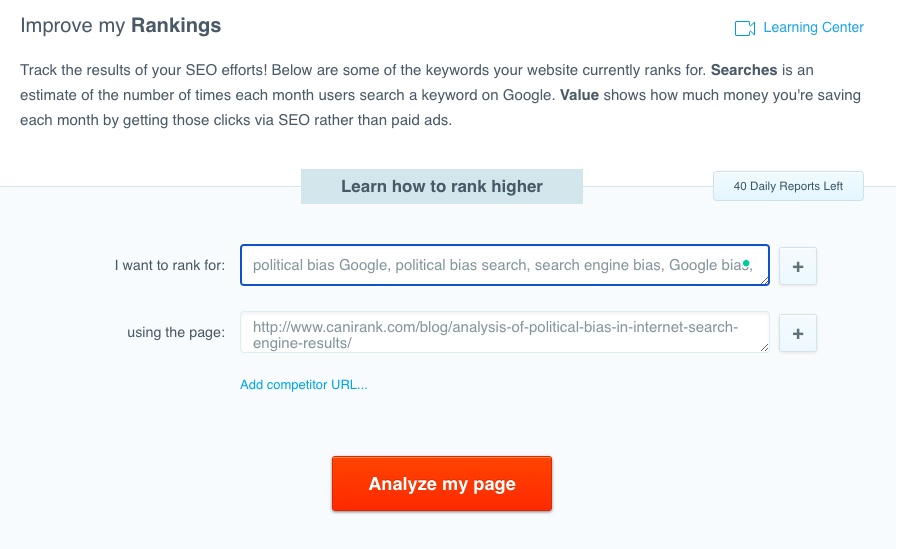
- The tool will crawl the sites that are currently ranking on Page 1 for your target keyword(s), and display those findings in a detailed report. This number crunching takes ~5 minutes, so refresh the page after that time has elapsed. Once you see a percentage appear in the ‘Optimization’ column, the keyword report is ready to view.

- Filter for the URL to avoid keyword cannibalization. Your content may already have some valuable rankings positions that you don’t want to cannibalize, or overwrite. Enter your target URL in the ‘Filter by URL’ dropdown field to see all the rankings that this page currently has.
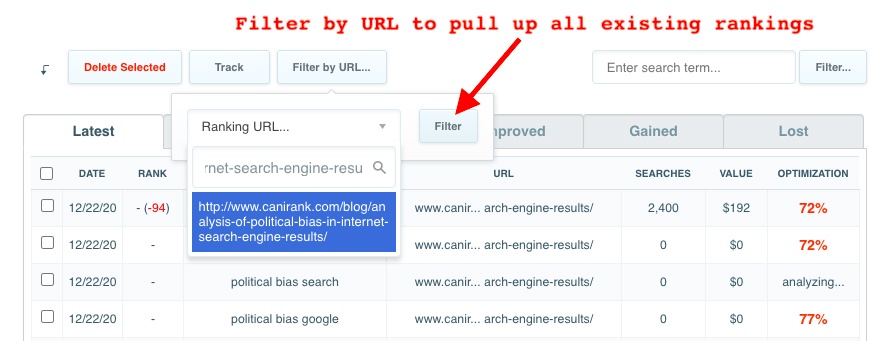 Choosing the right target keyword can be one of the biggest hurdles for Optimization newcomers. Yes, monthly search volume is important, but you’ll also want to pay attention to the traffic value. Higher traffic value indicates that a keyword is more likely to drive conversions – since the cost of buying paid ads for that keyword is higher. The last element you’ll want to consider in choosing a keyword is the likely ‘user intent’. Is the content you’re optimizing going to provide the information that someone looking for the keyword is wanting to find? Consider it this way: Google’s primary purpose is to deliver the best search results for their users. The better your content is optimized for the user intent of a specific keyword, the more likely it is that your content will rank well for that keyword – or variations of it.
Choosing the right target keyword can be one of the biggest hurdles for Optimization newcomers. Yes, monthly search volume is important, but you’ll also want to pay attention to the traffic value. Higher traffic value indicates that a keyword is more likely to drive conversions – since the cost of buying paid ads for that keyword is higher. The last element you’ll want to consider in choosing a keyword is the likely ‘user intent’. Is the content you’re optimizing going to provide the information that someone looking for the keyword is wanting to find? Consider it this way: Google’s primary purpose is to deliver the best search results for their users. The better your content is optimized for the user intent of a specific keyword, the more likely it is that your content will rank well for that keyword – or variations of it.  In the screenshot above, we have several potential options to choose from for the target keyword for our article. Of all the options, ‘tilt left google’ has the largest number of searches with 390 a month – but it’s monthly traffic value is only $31. ‘google algorithm bias’ has only 70 searches a month, but it’s value is higher at $145 a month, indicating that this is a good keyword for driving conversions. This article is a data-driven study of potential political bias in Google search results – so the target keyword should ideally reflect the intent of a search engine user looking for a reliable article on this topic. Given the options above, ‘google algorithm bias’ is likely the best fit across all of these considerations – search volume, value and intent.
In the screenshot above, we have several potential options to choose from for the target keyword for our article. Of all the options, ‘tilt left google’ has the largest number of searches with 390 a month – but it’s monthly traffic value is only $31. ‘google algorithm bias’ has only 70 searches a month, but it’s value is higher at $145 a month, indicating that this is a good keyword for driving conversions. This article is a data-driven study of potential political bias in Google search results – so the target keyword should ideally reflect the intent of a search engine user looking for a reliable article on this topic. Given the options above, ‘google algorithm bias’ is likely the best fit across all of these considerations – search volume, value and intent. - Once you’ve chosen your target keyword, click on the keyword to open up the detailed report. (View the complete keyword report here.)
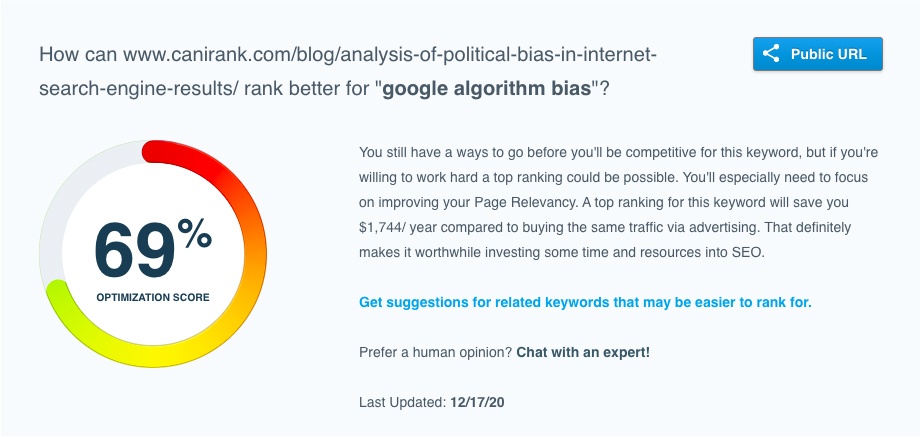 At the top of the report, you’ll see a short summary on what you’ll need to improve in order to rank – and how valuable it will be if you’re able to achieve a Page 1 result. Note: The ‘Optimization Score’ percentage factors in the various strengths of the existing Page 1 rankers – and how your site stacks up against them. If your target keyword has an Optimization Score lower than 60%, you’ll have a hard time competing for a high ranking. Click on the blue ‘Get suggestions for related keywords that may be easier to rank for’ link for a list of less-competitive opportunities.
At the top of the report, you’ll see a short summary on what you’ll need to improve in order to rank – and how valuable it will be if you’re able to achieve a Page 1 result. Note: The ‘Optimization Score’ percentage factors in the various strengths of the existing Page 1 rankers – and how your site stacks up against them. If your target keyword has an Optimization Score lower than 60%, you’ll have a hard time competing for a high ranking. Click on the blue ‘Get suggestions for related keywords that may be easier to rank for’ link for a list of less-competitive opportunities.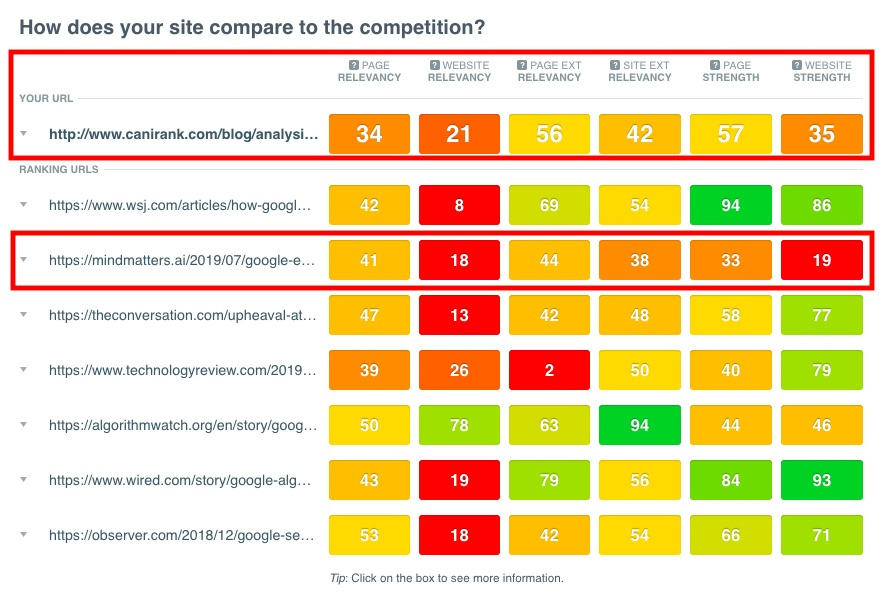 The report’s heatmap shows you at a glance how your site compares to the existing Page 1 rankers. The more green tones you see in the ‘Ranking URLs section, the harder it will likely be to compete. For this keyword, while there are some strong competitors – like Wired.com and WSJ.com – there is an opportunity to rank well against the article on mindmatters.ai, as this page is scoring as well, or better than, that site in several areas.
The report’s heatmap shows you at a glance how your site compares to the existing Page 1 rankers. The more green tones you see in the ‘Ranking URLs section, the harder it will likely be to compete. For this keyword, while there are some strong competitors – like Wired.com and WSJ.com – there is an opportunity to rank well against the article on mindmatters.ai, as this page is scoring as well, or better than, that site in several areas.
- Review the ‘related terms’ list, and incorporate these terms into your content.
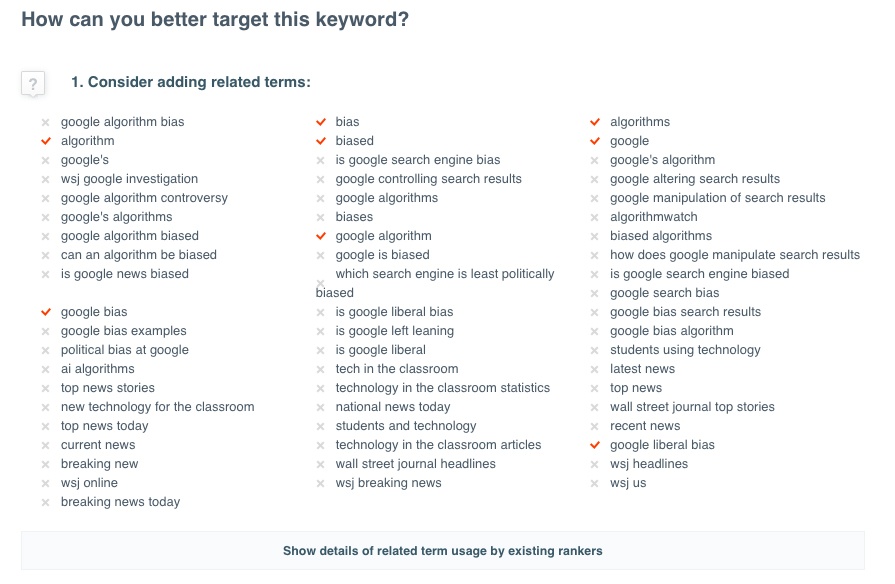 Including related terms in your content is important because of Google’s focus on ‘semantic relevancy’. This focus is why old-school keyword stuffing no longer works to gain Page 1 rankings. Google wants to present their users with the most comprehensive, relevant websites that will address their queries, and including related terms in your content indicates to the crawler that you’re providing a ‘deep dive’ into the topic. CanIRank software pulls these terms from the existing Page 1 ranking URLs, resulting in a highly-accurate list of words and questions to include within your content. As a rule of thumb, it’s a good practice to include 10-15 related terms to include in your content. Super-user tip: When using the CanIRank-generated list, any terms with a red checkmark are already in your content, while terms with a grey x have not yet been included.
Including related terms in your content is important because of Google’s focus on ‘semantic relevancy’. This focus is why old-school keyword stuffing no longer works to gain Page 1 rankings. Google wants to present their users with the most comprehensive, relevant websites that will address their queries, and including related terms in your content indicates to the crawler that you’re providing a ‘deep dive’ into the topic. CanIRank software pulls these terms from the existing Page 1 ranking URLs, resulting in a highly-accurate list of words and questions to include within your content. As a rule of thumb, it’s a good practice to include 10-15 related terms to include in your content. Super-user tip: When using the CanIRank-generated list, any terms with a red checkmark are already in your content, while terms with a grey x have not yet been included.  You can dial in your content even more accurately by opening up the ‘details’ table below the list. You’ll find the most common related terms used by existing rankers, which elements those terms are included in, and how your content compares to the rankers.
You can dial in your content even more accurately by opening up the ‘details’ table below the list. You’ll find the most common related terms used by existing rankers, which elements those terms are included in, and how your content compares to the rankers. - Include your target keyword, but don’t overdo it. This slider shows you how often you’re already using the target keyword, and how many times to include it in the content without ‘stuffing’. If your use of the target keyword is in the Danger Zone, replace some instances of the keyword with related terms or synonyms to get back into the Ideal zone.

- Answering ‘common’ questions is the fast track to ranking. One of CanIRanks’ newest features takes the guesswork out of knowing what information is missing from your content. The software pulls together a list of the relevant questions being answered in your competitors’ content. By including the question as a header (either an H2 or H3), with a paragraph or two of answer content, you’re more likely to answer the questions that your prospects have (so they don’t have to look elsewhere!)

- Ensure that your content is comprehensive, in comparison to existing rankers. The goal of comprehensive content isn’t to ‘out-write’ your competition by creating the longest, wordiest resource. While many SEOs may tell you that ‘longer content’ always ranks better, that’s not necessarily true. (In fact, we’ve done a data-driven study on content length and its impact on rankings.)
 Aim for the middle range – longer than some of your competitors, but not as long as your wordiest competitor. This will not only ensure that your content is more likely to rank well, but also helps you better allocate resources. Creating or optimizing content is an investment, so work smarter by doing just what you need to – not going overboard.
Aim for the middle range – longer than some of your competitors, but not as long as your wordiest competitor. This will not only ensure that your content is more likely to rank well, but also helps you better allocate resources. Creating or optimizing content is an investment, so work smarter by doing just what you need to – not going overboard. - Use data to make better marketing decisions. As one of the most accurate SEO tools on the market, CanIRank delivers real-time insight into why sites are ranking well – and exactly what you need to change or improve to be more competitive. The Improve My Rankings report tells you how to update your content – but it also tells you what other tactics you might need to pursue to rank. Click on the ‘Actions’ button for a detailed task list.
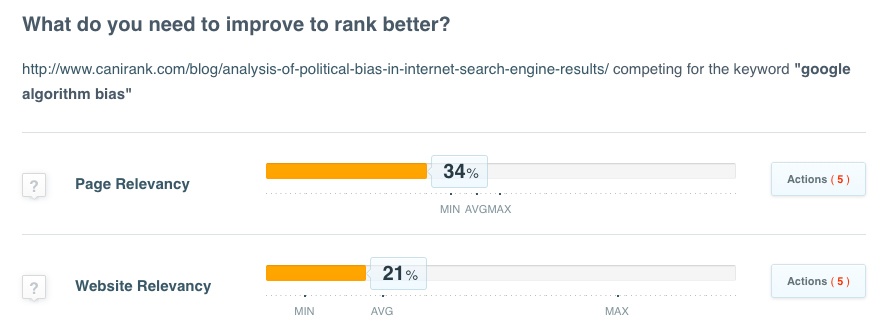 If you’ve optimized your content well, you might not need to check off every item on the task list – but if you’re still struggling to gain valuable rankings, revisit this report to see what other tactics you can use to increase relevancy or strength.
If you’ve optimized your content well, you might not need to check off every item on the task list – but if you’re still struggling to gain valuable rankings, revisit this report to see what other tactics you can use to increase relevancy or strength. - Track your progress. Optimization isn’t an instant fix. It takes roughly 2-4 weeks after implementation to see your rankings increase, so be patient. In most cases, your rankings will initially drop immediately following the optimization – so don’t panic if you see this happening. Once Google has cached the changes, you’ll see the rankings rise – and once you’re ranking well, your content will likely gain additional related keyword positions as searchers engage with your site.
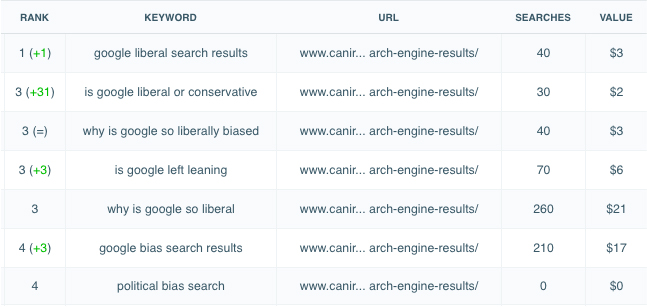
What on-site content should I optimize first?
Different pages on your website have different levels of importance. For example, your homepage is more weighty, in terms of site hierarchy than a mid-level, or ‘pillar’ page that shares specific details about your product or service. (These pages are typically linked in your site’s top navigation menu.) Blog posts are yet another rung below those pillar pages.
In terms of prioritization, it’s tempting to focus all your initial optimization efforts on your most powerful pages. But these pages – whether homepage or pillar – target some of the most valuable keywords in your industry – so you may find it challenging to get these pages to rank quickly. On the other hand, blog posts typically don’t have enough ‘page strength’ to rank for the high volume keywords that drive a significant amount of traffic.
Instead focus your efforts on a specific topic area. Choose a pillar page to optimize first, and then two or three related blog posts. We use this ‘thematic focus’ approach to optimizations to start gaining rankings and traffic for a handful of relevant keywords.
CanIRank software offers detailed insights, coupled with processes developed by our in-house team that delivers faster results – and more revenue.
Page Optimization Processes
Because not all pages are equal, different pages will require different optimizations processes to maximize your effort. Knowing which processes to use and when will help you get the most out of your content marketing efforts. Click through on the processes below for step-by-step instructions.
- How to optimize for rankings on pages 2-4 of the SERPs. These are low-hanging fruit opportunities that can deliver relevant traffic quickly.
High Potential Page Optimization
- How to optimize pages that are vital to your sales funnel, while increasing the topic relevancy, strength and rankings potential of your entire website.
Trilogy Optimization
- How to optimize key pages for user experience (UX), and conversion rate optimization (CRO).
Not sure you’ll be able to remember all of this? Grab the cheat sheet here.
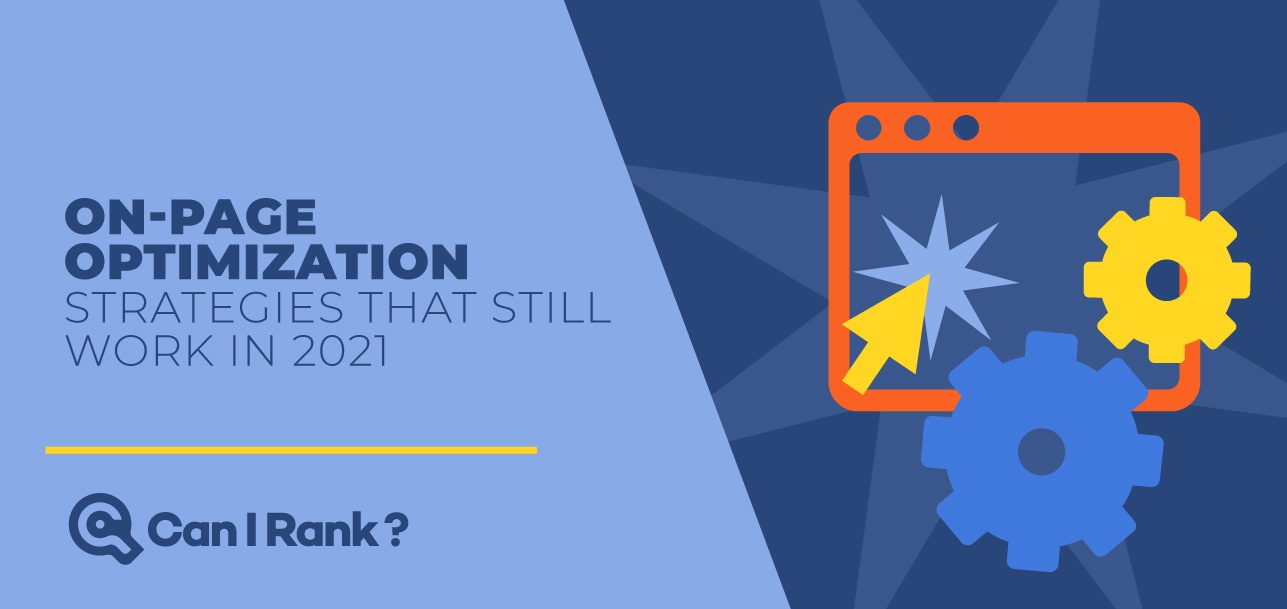
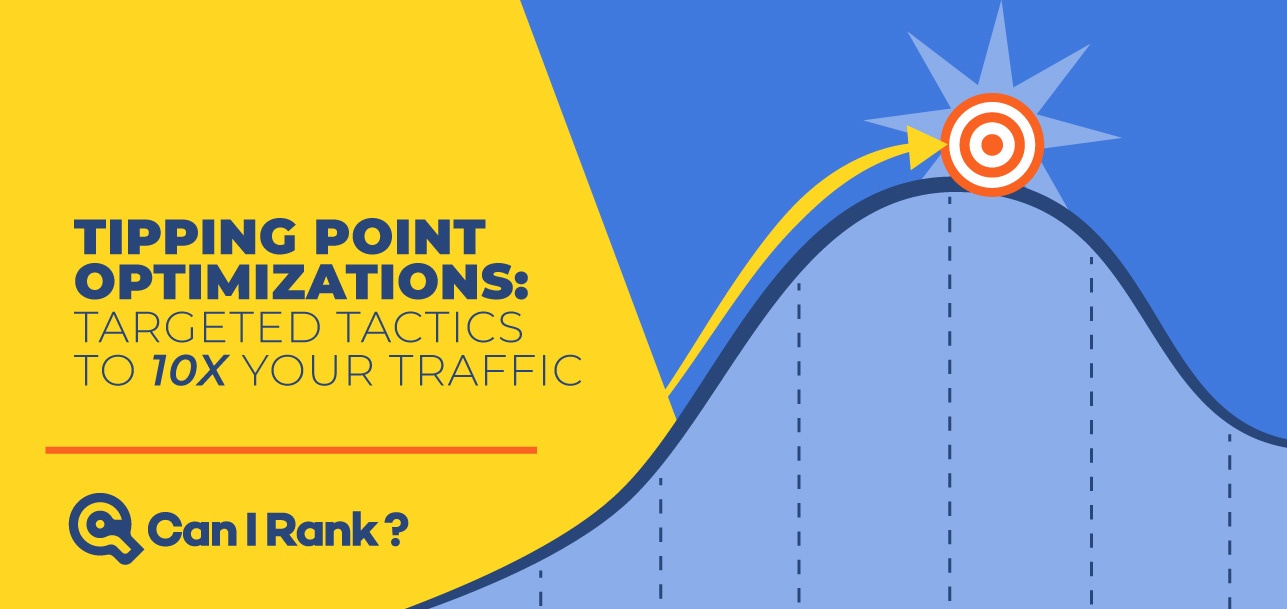
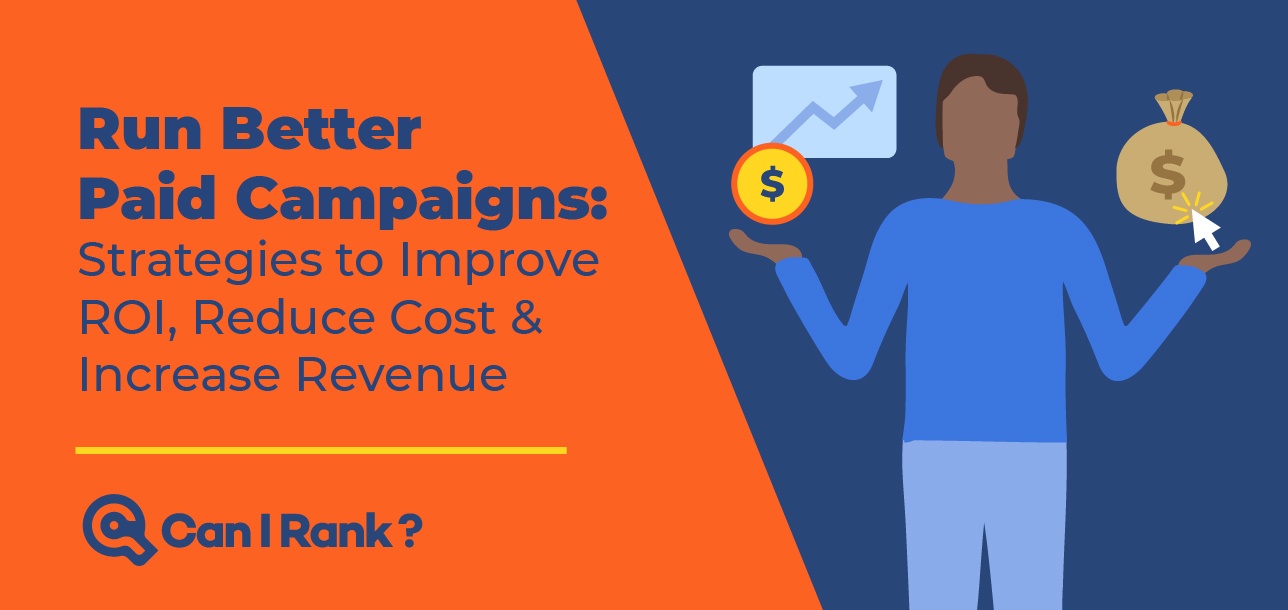

Leave A Comment